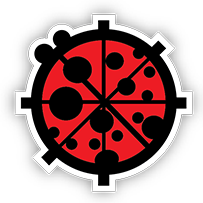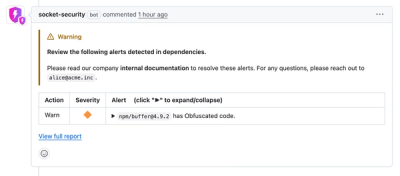
Security News
pnpm 10.16 Adds New Setting for Delayed Dependency Updates
pnpm's new minimumReleaseAge setting delays package updates to prevent supply chain attacks, with other tools like Taze and NCU following suit.
Library housing basic geometry objects and computation methods needed for the Ladybug Tools core libraries.

Ladybug geometry is a Python library that houses geometry objects and geometry computations methods used throughout the Ladybug Tools core libraries.
The library is designed to work with a wide range of Python environments and it returns consistent results between them (cPython 2 and 3, IronPython 2).
pip install -U ladybug-geometry
This library was built by combining capabilities of several different open-source (MIT Licensed) projects, establishing a set of standardized geometry objects that allowed them all to talk to one another, and adding several other capabilities with new code. We as a community owe a huge amount of thanks to the open source projects that provided many of the starting capabilities of this package and we are indebted to the developers who made their work available under an MIT license for the betterment of geometry computation everywhere. Where possible, you will find detailed lists of references in the docstrings of this package's source code. A summary of the key sources that were used to build this library are as follows:
We initially debated whether the burden of geometry computation should be placed largely on the CAD environments in which Ladybug Tools operates or whether it should be included in a dedicated core Python library like this one.
As we developed the core libraries, it became clear that there are large advantages to having it in the core including:
Items 1 and 4 above proved to be particularly important and so the decision was made that the Ladybug Tools core libraries would have its own geometry library that was distinct from CAD plugins.
Before committing to write our own library, we looked into using or tweaking other comprehensive open source geometry libraries for the core including:
However, Rhino3dm lacks basic geometry computation. The Blender library had many capabilities but it only works in Python3 and this could break certain CAD workflows that rely on IronPython. Boost Geometry (the geometry library used by the OpenStudio SDK) also had a lot of functionality but it clearly has C dependencies, making it unusable from IronPython. Topologic also appeared to have C dependencies, though the most relevant issue was that its dual license could create challenges for certain use cases of Ladybug Tools.
After considering the situation further, we realized that many of the capabilities that we needed could be achieved by building off the work of various open source MIT-licensed projects as long as we committed to using planar geometry. Since all of the geometry ultimately going to the engines (Radiance, E+) is planar, we made the decision that the core libraries will primarily support planar objects with no NURBS support and very limited support for Arcs, Circles, Spheres, Cylinders and Cones.
Thus this repository was born!
git clone git@github.com:ladybug-tools/ladybug-geometry.git
# or
git clone https://github.com/ladybug-tools/ladybug-geometry.git
cd ladybug-geometry
pip install -r dev-requirements.txt
pip install -r requirements.txt
python -m pytests tests/
sphinx-apidoc -f -e -d 4 -o ./docs ./ladybug_geometry
sphinx-build -b html ./docs ./docs/_build/docs
FAQs
Library housing basic geometry objects and computation methods needed for the Ladybug Tools core libraries.
We found that ladybug-geometry demonstrated a healthy version release cadence and project activity because the last version was released less than a year ago. It has 1 open source maintainer collaborating on the project.
Did you know?

Socket for GitHub automatically highlights issues in each pull request and monitors the health of all your open source dependencies. Discover the contents of your packages and block harmful activity before you install or update your dependencies.

Security News
pnpm's new minimumReleaseAge setting delays package updates to prevent supply chain attacks, with other tools like Taze and NCU following suit.

Security News
The Rust Security Response WG is warning of phishing emails from rustfoundation.dev targeting crates.io users.

Product
Socket now lets you customize pull request alert headers, helping security teams share clear guidance right in PRs to speed reviews and reduce back-and-forth.